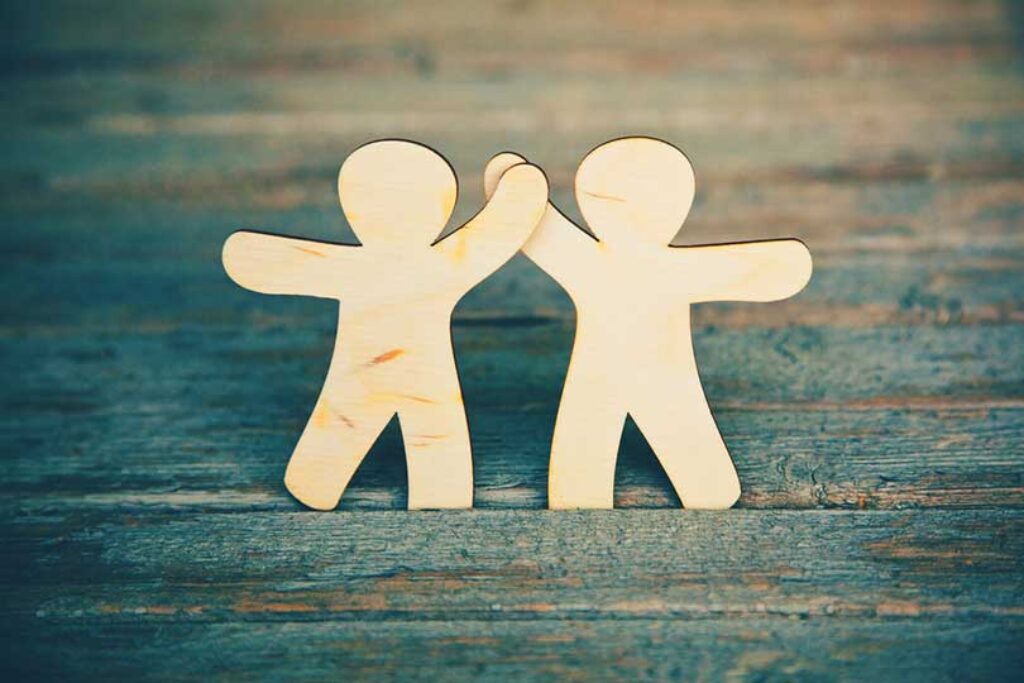
Are you tired of feeling stuck in the same old cycle of relationship conflict? Do you long for a deeper connection with your partner but find yourself constantly butting heads instead? It’s time to bridge the gap and discover the power of communication in repairing relationship conflict.
In this article, we will explore the transformative potential of effective communication techniques. By actively listening and truly understanding each other’s perspectives, you can break down barriers and find common ground. But communication isn’t just about the words we say – it’s also about the silent language of nonverbal cues. By becoming aware of these cues and using them to enhance your understanding, you can establish a deeper level of connection.
Resolving conflict in relationships requires more than just talking – it requires effective conflict-resolution techniques. We will delve into strategies that promote healthy communication and problem-solving, empowering you to navigate conflict with grace and empathy.
Ultimately, building trust and empathy is at the core of bridging the gap in relationships. By cultivating these qualities, you can create a safe and supportive environment where both partners feel heard and understood.
Are you ready to embark on this journey of communication and connection? Let’s dive in and discover the power it holds in resolving relationship conflict.

Source: therapymantra.co
Table of Contents
Key Takeaways
- Effective communication is crucial in resolving relationship conflict and deepening connections.
- Active listening and understanding each other’s perspectives are essential for successful communication.
- Nonverbal cues play a significant role in communication and should be considered alongside verbal communication.
- Building trust, empathy, and creating a safe and supportive environment are important for fostering healthy communication and problem-solving.
Active Listening: The Key to Understanding
Active listening is the key to truly understanding others and bridging the gap in relationship conflict. It is a powerful tool that can improve communication and strengthen relationships.
When you actively listen, you show genuine interest in what the other person is saying. You not only hear their words but also pay attention to their body language and emotions. By doing so, you create a safe and supportive space for them to express themselves fully.
Active listening allows you to put yourself in their shoes, empathize with their feelings, and gain a deeper understanding of their perspective. It fosters trust and openness, which are essential for resolving conflicts and improving relationships.
So, the next time you find yourself in a disagreement, remember the power of active listening to navigate through the conflict and strengthen your bond with others.
Nonverbal Communication: The Silent Language
Engaging in effective nonverbal communication can be the key to understanding others without even saying a word. Body language, which includes gestures, facial expressions, and posture, can provide valuable insight into a person’s thoughts and feelings.
By deciphering these unspoken signals, you can gain a deeper understanding of someone’s emotional state and intentions. Emotional intelligence plays a crucial role in this process, as it involves understanding and managing nonverbal cues. By being attuned to these cues, you can respond with empathy and support, fostering a stronger connection and resolving relationship conflicts more effectively.
Remember, nonverbal communication is a powerful tool that can bridge the gap between individuals, allowing for a deeper level of understanding and connection.
Effective Conflict Resolution Techniques
Create a harmonious connection by understanding the emotions of others and finding common ground to mend broken bridges. Collaborative problem-solving is a powerful technique that enables both parties to actively participate in resolving conflicts.
By encouraging open and honest communication, you can foster an environment where everyone feels heard and understood. This approach allows for the exploration of different perspectives and the identification of shared goals.
Assertiveness training is another essential tool for effective conflict resolution. It empowers individuals to express their needs and concerns in a respectful and confident manner. By developing assertiveness skills, you can navigate difficult conversations with ease, ensuring that your voice is heard without causing unnecessary tension.
Remember, resolving relationship conflict requires empathy, active listening, and a genuine desire to find common ground. Together, we can bridge the gap and foster healthy, thriving relationships.
Building Trust and Empathy

Source: positivepsychology.com
Building trust and empathy is essential in fostering strong and fulfilling connections with others. It is the foundation upon which healthy relationships are built. By cultivating emotional intelligence, you can better understand the feelings and needs of those around you. This allows you to respond with empathy and compassion, creating an environment of trust and understanding.
Building rapport is another crucial aspect of developing strong connections. By actively listening and showing genuine interest in others, you can create a sense of connection and validation. This helps to build trust and opens the lines of communication, allowing for more effective conflict resolution.
Remember, building trust and empathy takes time and effort, but the rewards are immeasurable in creating fulfilling and harmonious relationships.
Conclusion

Source: community.thriveglobal.com
So there you have it, my friend. We’ve explored the power of communication in resolving relationship conflict and what a journey it has been.
Throughout this article, we’ve delved into the art of active listening and the importance of understanding. We’ve discovered the silent language of nonverbal communication, and we’ve learned effective conflict-resolution techniques.
But let me tell you something, all these strategies and techniques mean nothing unless you truly believe in the power of communication.
So go out there, my friend, investigate the truth of this theory for yourself, and watch as your relationships become stronger and more fulfilling.
Remember, it all starts with a conversation.








